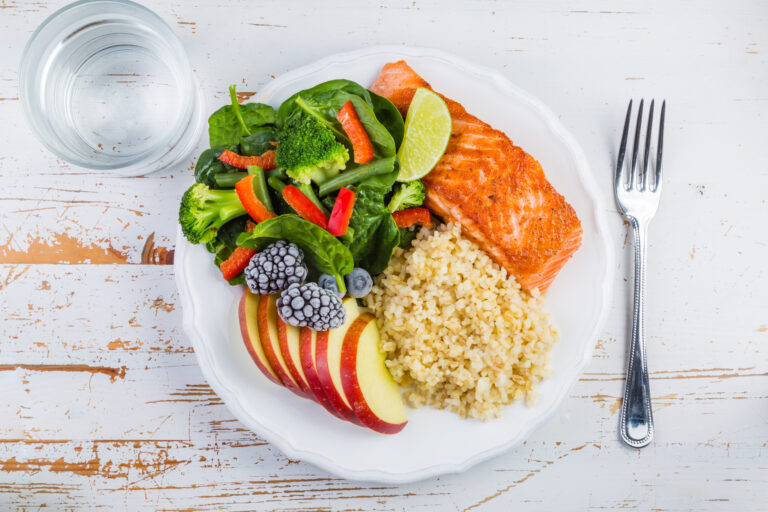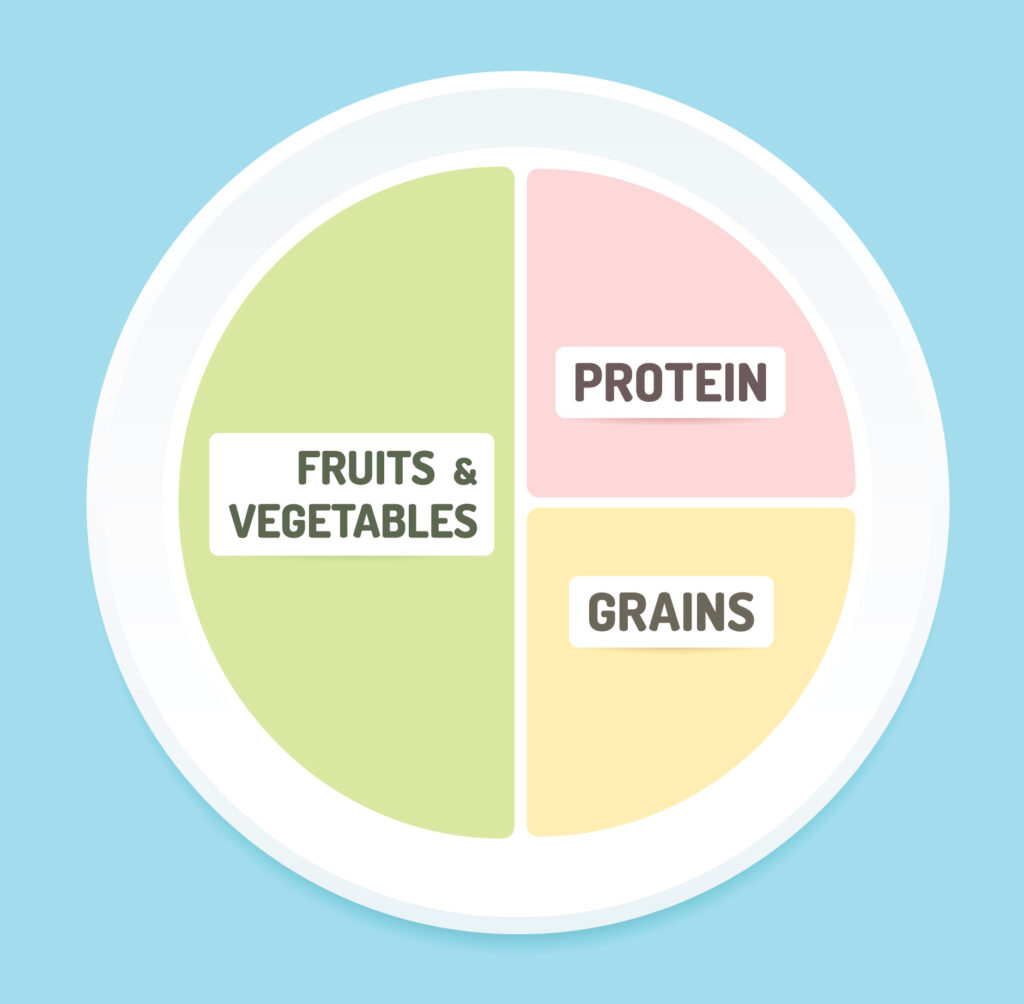
Living Well at Home

Do you find it hard to eat “healthy” foods? We’re with you. It’s important to remember that foods aren’t “good” or “bad.” Learning about nutrition can empower you to decide what’s good for your body.
Whether you are managing a chronic condition, like diabetes, or you just want to be healthier, balanced eating is key. Even with grocery prices rising, eating well doesn’t have to be pricey. Look at the foods you are already buying and use the pointers below to figure out the right portions for you.
Get to know your carbs
Carbohydrates give us energy. There are three types:
- Sugar is present naturally in many foods, like fruit and vegetables. Many processed foods – like candy and soda – contain a lot of added sugar. Foods like white bread and white rice also contain more sugar and fewer nutrients than whole grains. You don’t have to deprive yourself completely – it’s OK to have sugar, but moderation is key. Eating too much sugar can cause a variety of poor health outcomes, from tooth decay to diabetes and heart disease. If you are already managing these conditions, it is critical to limit your sugar.
- Fiber is your friend! It helps with digestion and makes you feel full for longer. High-fiber foods include green vegetables, water-rich foods like tomatoes and cucumbers, and seeds.
- Starch is in foods like potatoes and plantains, which can be nutritious when prepared with minimal oil. Starchy foods do contain a lot of natural sugar, however. High-fiber starches like sweet potatoes, beans, and brown rice are great choices.
Not all proteins are equal
A lean protein like chicken gives you more nutrients per serving than one that is high in sodium or fat, like ham. Hard cheese (like feta) and plain yogurt contain more protein and less fat than soft cheese (like mozzarella). Plant-based proteins like tofu and quinoa are also great protein-rich options.
Fat is not all bad
Contrary to many fad diets, our bodies need fat to survive. However, it’s important to avoid trans fats, which raise bad cholesterol and lower good cholesterol. This increases your risk of heart disease. Common sources of trans fats include fried foods, baked goods, frozen foods, mass-produced snacks, and margarine. Foods rich in healthy fats include vegetable oils (such as olive, canola, sunflower, soy, and corn), nuts, seeds, and fish.
Don’t forget about water
Still or sparkling water is the best source of hydration. Sweetened drinks, including fruit juice, can add a lot of sugar into your diet. If water bores you, try adding citrus or crushed berries.
Watch your portions
It’s important to know the serving sizes of your food. For example, one carb serving is 15 grams. One cup of green beans or carrots contains one carb serving, because those vegetables have few carbohydrates. However, one carb serving is also found in only 1/3 cup of cooked brown rice or one slice of bread. That is because those foods are higher in carbohydrates.
For packaged foods, be sure to read the label. A snack may appear to be low-carb, but if the serving size is small, the number could be misleading.
Learn the MyPlate Method
The MyPlate method is one tool to help you balance your diet. The basic principle is to fill half your plate with fruits and vegetables, one quarter with protein, and one quarter with grains at each meal.
Everyone can benefit from using this method, but for those with diabetes, this is a good strategy for managing blood sugar levels. This method doesn’t have to break the bank. Rather than settling for fast food options to fit your budget, pick a few inexpensive staples for each section of your plate.

MyPlate Tips:
- Non-starchy fruits and vegetables like cucumbers, broccoli, and greens are low in carbohydrates, so they won’t raise your blood sugar much.
- Canned or frozen fruits and veggies (with no added sugar or sodium) are just as good for you as fresh options. They will last longer and may cost less, too.
- Water-rich foods like cucumbers and tomatoes will help keep you full for longer.
- Starchy vegetables like beans and corn are high in antioxidants, vitamins, and minerals that are important to a well-balanced diet in moderation.
- Protein comes in many packages, including frozen and canned meats and fish. Selecting low-sodium options is a great way to stock up on inexpensive proteins with a long shelf life.
- Plant-based proteins, like tofu, tempeh, and quinoa, are versatile foods that are easy to prepare.
- Whole grains, such as brown rice and wheat bread, are higher in nutrients and fiber than processed foods like white rice and bread. If you prefer white rice, consider adding flax or chia seeds to boost the fiber content.
Interested in learning more?
For more information on the MyPlate method, visit myplate.gov. To dig even deeper into eating well, check out:
- Recipes and nutrition (The American Diabetes Association)
- Diet and lifestyle recommendations (The American Heart Association)
- Nutrition resources library (Centers for Disease Control and Prevention)
- 13 tips to meal plan on a budget (Living Well at Home)
Related Articles


